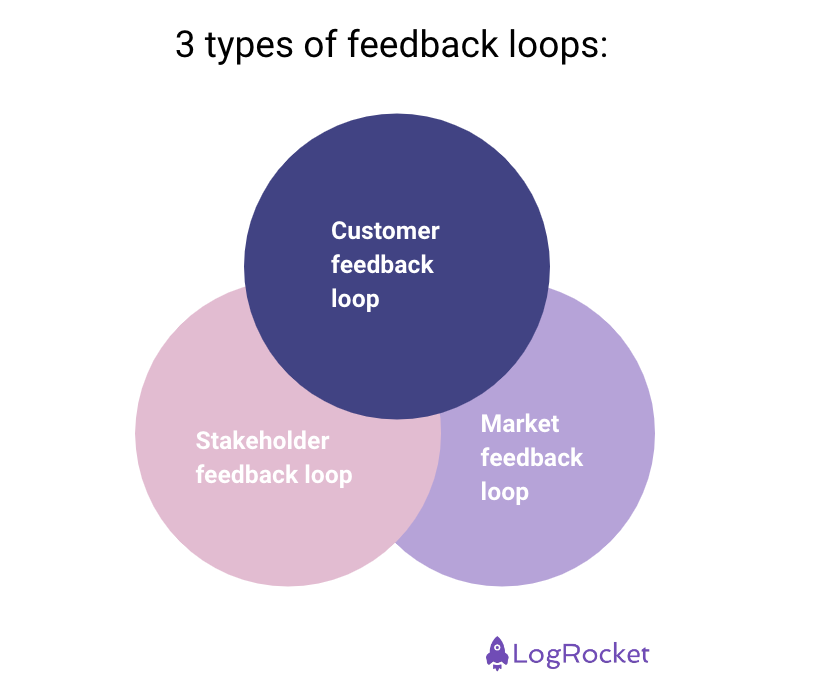Back when I was at Zalando, my team was working on a tool for 700 internal users. These users were a mix of photographers, retouchers, and copywriters. Our tool was meant to automate the work of photographers initially and then move to retouchers and copywriters.

I was new to the project since the responsible PM had left the team abruptly. The first few days I got to know about the product and the users. Interestingly, I came in just a few days before the launch. Two weeks down the line the launch was scheduled. I decided to do user testing with real users one week before the go-live.
This was the day when I realized how important feedback loops are. It turned out that during user testing we found two blocker issues and they were so important that we couldn’t go ahead with taking this tool live on the scheduled date.
What if the user testing hadn’t happened? What if there was no feedback loop? What if we would have gone to the users directly with the final product without taking their feedback?
In the end, we managed to agree with the users about a temporary manual solution for the problem and launched the product three weeks later instead of the original two weeks.
In this article, you’ll learn what a feedback loop is, the different types, and how to implement one effectively.
A feedback loop is when the output of a system such as internal employee/user feedback or external customer feedback is taken as input to improve a product. In cases like the one I mentioned above, it’s also used to take feedback from the users before launching the product to make sure that the product is delivered according to the expectations of the users.
There are three main types of feedback loops depending on the visibility and type of feedback that you’re seeking:

In this version, you collect feedback from the customers who are using your product. There are two types of customer feedback loops:
As opposed to customers, you can also collect feedback from internal stakeholders such as higher management, engineering, design, marketing, sales, customer service, etc. as well as external stakeholders such as partners, industry experts, advisors, etc. While this won’t lend you immediate insights into your users, these stakeholders have niche knowledge that can help you identify potential issues in your product that customers might not pick up on.
Moving away from individuals, you can also seek feedback from the market itself. This includes two types of loops:
To help you get started implementing a feedback loop within your product team, you can follow these steps.
There are many tools and technologies available that can help you implement a feedback loop. The following table outlines some of the most popular ones:
| Feedback collection | Feedback analysis | Feedback implementation |
|
|
|
When I was at Zalando our product was for more than 700 internal users. Even though these were internal users, it was a little difficult to understand how to implement feedback loops. Below is the list of challenges and their solutions that we implemented.
As mentioned there were more than 700 users. This made it difficult to decide which users to take feedback from. We initially went with team leads but unfortunately, they had a lot of stuff on the plate and weren’t available for giving feedback actively.
So we decided to go with power users. These aren’t necessarily team leads but have been working in the team for a while now (in our case they have been in the company for more than five years). They also had a solid grasp of processes so we went with 15 power users to seek feedback from.
For a short period, our team moved to the department where our users were. Originally, our team was a part of a centralized tech team but because of the decision of the higher management to move every team with its respective unit, we were moved to the department of our users. This meant my team was reporting to the head who was the head of our users.
Most of the time there was feedback bias. As a result, we introduced a RICE score to understand which feedback is valuable, and which is not.
In one instance after the feedback collection process, we provided a solution that had the usage of a third-party tool. Usually, whenever a new tool is introduced, the users get overwhelmed. And the same happened when we proposed an introduction of a new tool.
To not overwhelm the users we had a one hour meeting with the 15 power users to explain the rationale behind the new tool. We also gave a demo and explained how the tool would make the lives of 700 users easier. Eventually, these 15 power users approved and were able to imbibe confidence in the rest of the users.
In my career of 10 plus years as a product manager, feedback loops have been an effective tool to improve a product/process. With the emergence of AI and various tools, I’m confident that this process will become easier. I believe the companies whose loop from research to implementing feedback is faster, will eventually win.
These are those customer-centric companies that truly understand customers and build products that eventually help them. What different methods have you used to seek feedback from customers? Tell me in the comments.
Featured image source: IconScout

LogRocket identifies friction points in the user experience so you can make informed decisions about product and design changes that must happen to hit your goals.
With LogRocket, you can understand the scope of the issues affecting your product and prioritize the changes that need to be made. LogRocket simplifies workflows by allowing Engineering, Product, UX, and Design teams to work from the same data as you, eliminating any confusion about what needs to be done.
Get your teams on the same page — try LogRocket today.

Most teams fail at autonomy. Learn how clear rules help product teams move faster without micromanagement.

A practical framework for PMs to use AI in ideation without sacrificing judgment, strategy, or decision quality.

A practical five minute revenue estimation method to help product managers compare ideas, drop low impact features, and prioritize smarter.

A practical guide for PMs who want to stop being bottlenecks, delegate smarter, and lead teams effectively with a clear ownership framework.